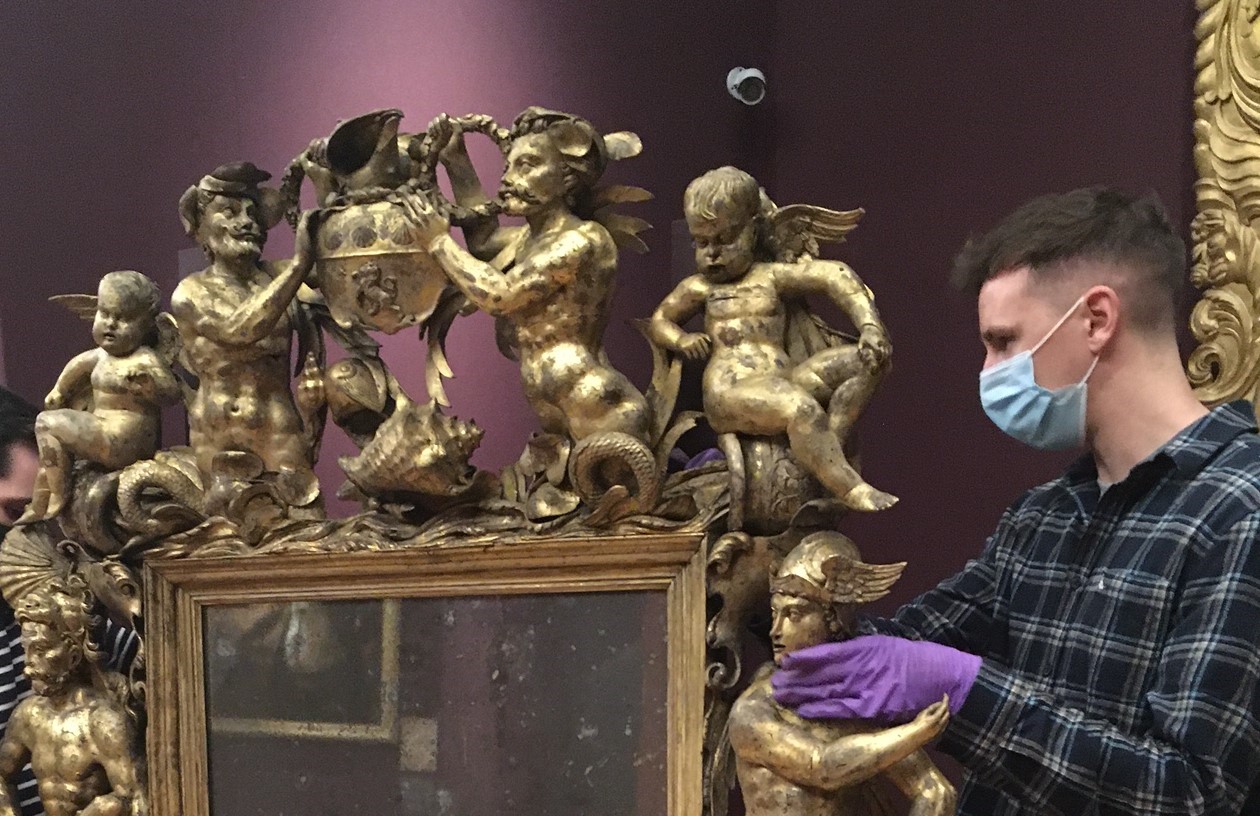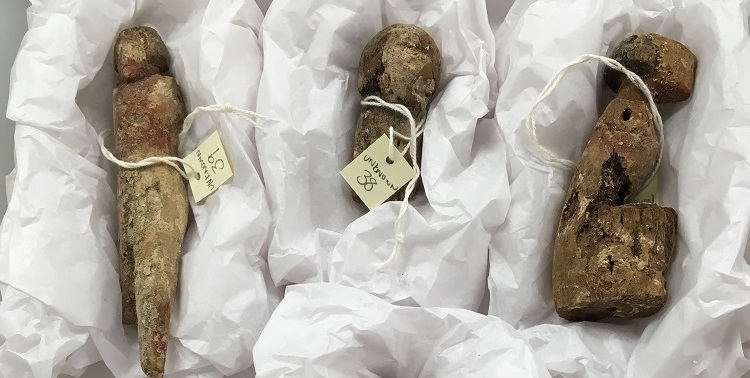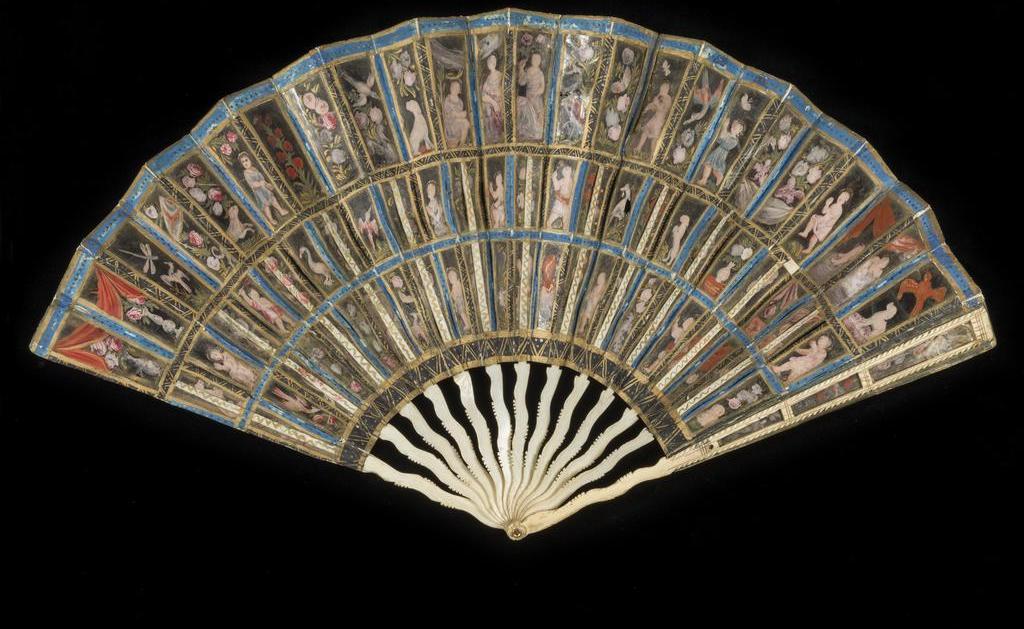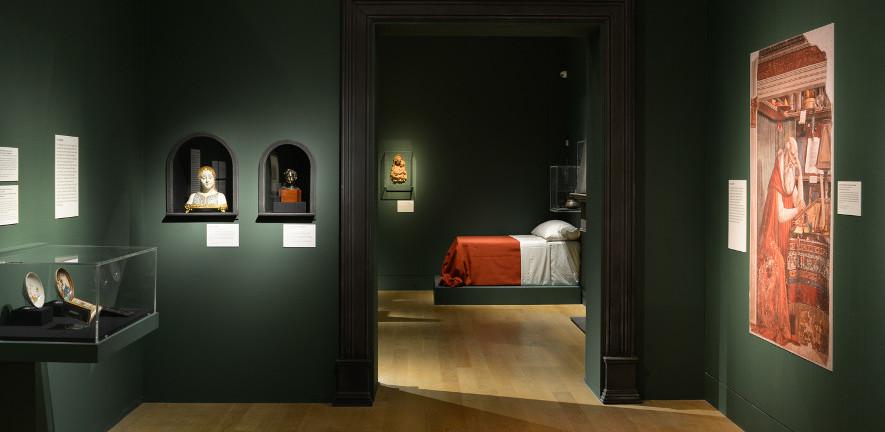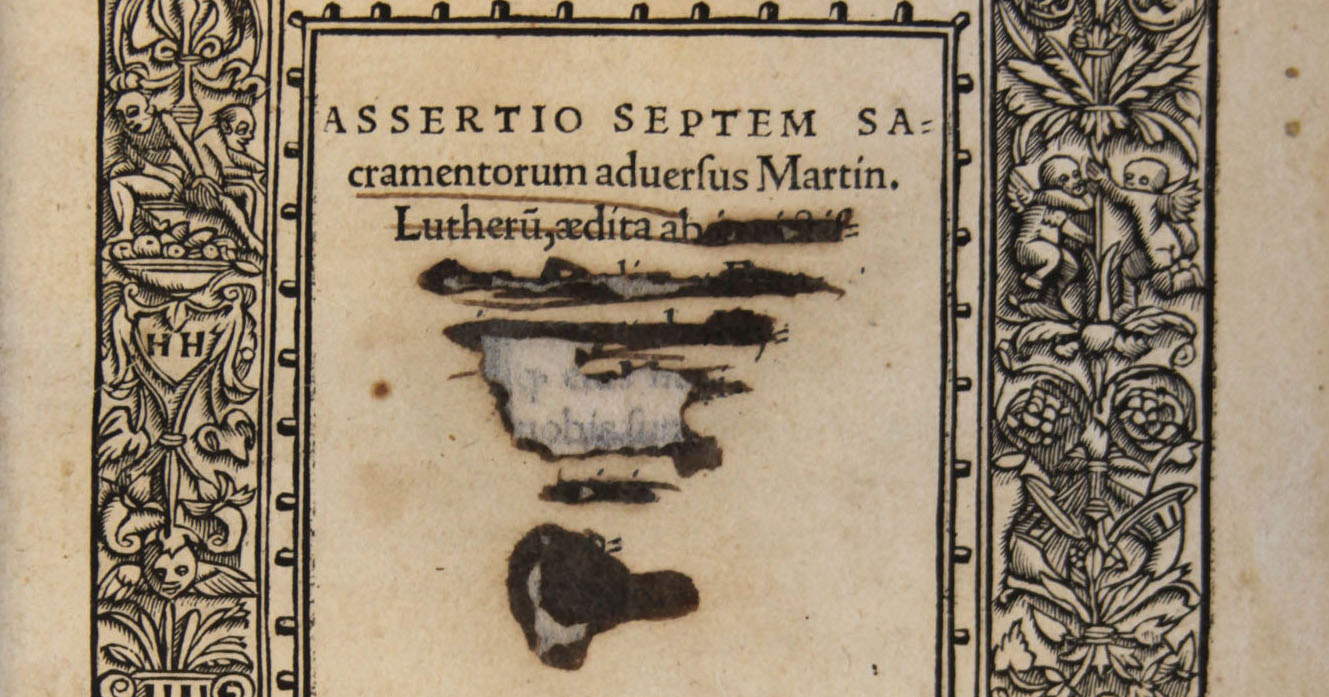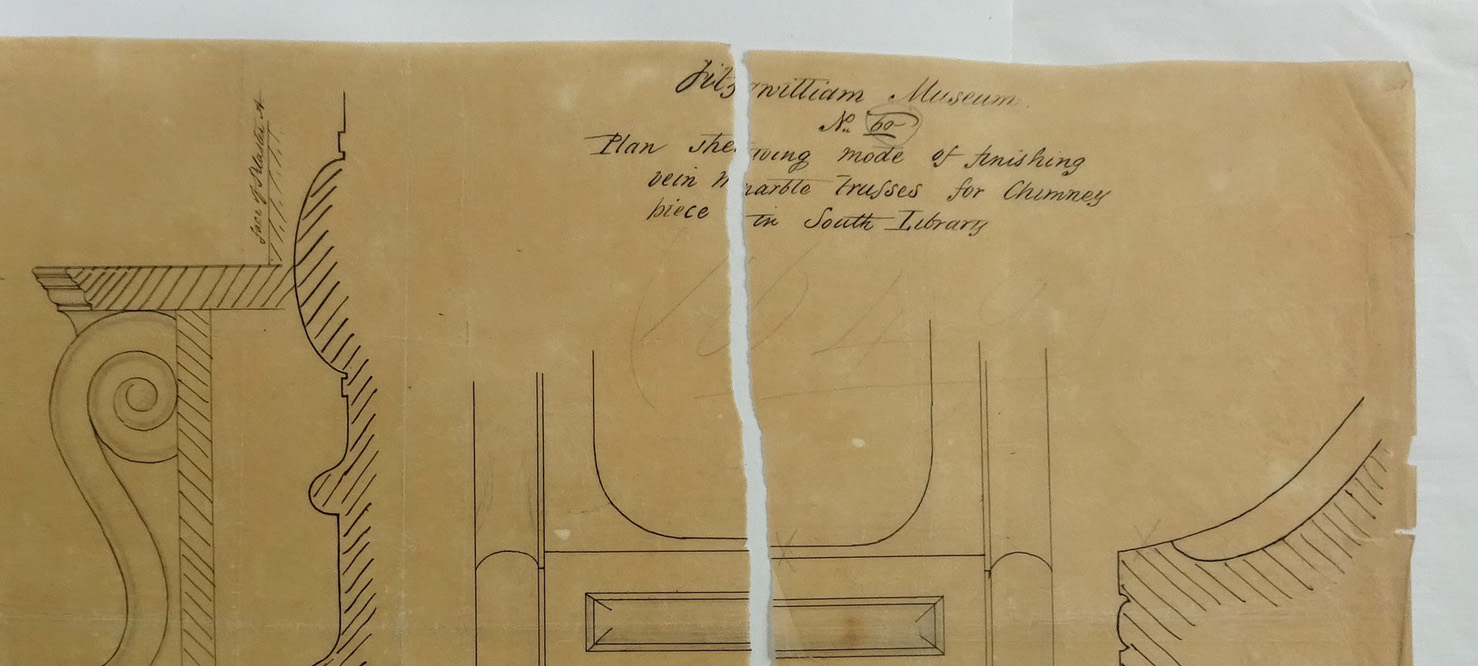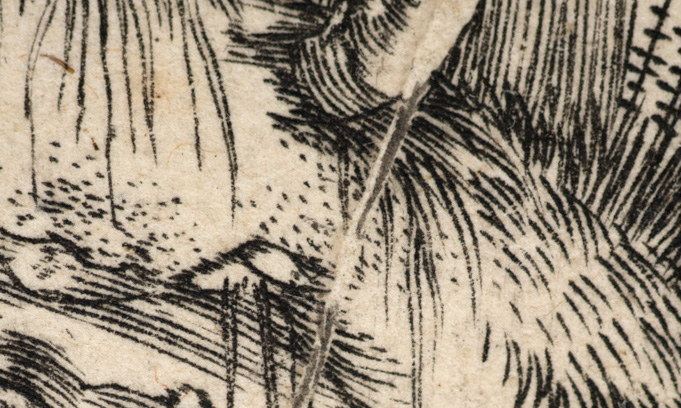Flipping Admiral Russell’s Frame: how and why Fitz conservators turned a baroque masterpiece upside-down
Sophie Rowe
April 29, 2021
Applied Arts
Tags: cleaning, frame, gilding, mirror
This magnificent carved and gilded frame was the Fitzwilliam Museum’s birthday present to itself in 2016, when the Museum celebrated its 200th anniversary. It was acquired with generous support from the Friends of the Fitzwilliam, as well as the V&A Purchase Grant Fund, Henry Moore Foundation, Finnis Scott Foundation, Old Possum’s Practical Trust and private individuals. It is a fantastic example of a baroque trophy frame, made for Admiral Edward Russell in the 1690s. The image shows what the public sees in the gallery, but conservators need to examine every nook and cranny during conservation treatment. It can be quite a challenge to access all areas with an object as fragile and heavy as this frame, so we had to be creative to solve the problem.

The frame is made from carved and gilded lime wood, and is highly elaborate and dramatic, with figures of Hercules on the left and Mercury on the right. The bottom of the frame shows the winged figure of Fame with two trumpets, one for good publicity and one for bad. The top is decorated with Tritons (demi-gods of the sea), and realistic seashells rising out of the waves, as well as two cherubs, all surrounding Russell’s coat of arms. Other details such as shields, helmets and the prow of a ship all show that this was a military trophy frame made to celebrate Admiral Russell’s naval victories against the French in 1692. There is much more information about the frame and its makers in this short film, and an excellent account of how trophy frames arose out of the ancient practice of taking military trophies from the field of battle in this 2019 blog by Lynn Roberts, a picture frame historian.
The frame was put on display as soon as it came to the Museum, because the public and benefactors who helped acquire it were keen to see it without delay. There was no time to conserve it in 2016, but recently we had a chance to examine and treat it, ready for a move to Gallery III.
From the start, we knew that conserving this object would be a challenge. The splendid carving is actually very fragile and worm-eaten, but the whole frame including the mirror is also extremely heavy, weighing around 70kg. Just moving it safely is tricky, let alone getting access to all sides for conservation treatment. How could we turn it over to look at the back without the frame collapsing or crushing itself under its own weight?
We started by working on the front to make it completely secure before turning the frame over. Lily Griffin, who is on a work placement with us for 10 months as part of her conservation MSc course at University College London, worked on the frame with me, and together we cleaned the gilded surface.

The gilding is only microns thick and the adhesive attaching it is very sensitive to water, so after vacuuming the surface we swabbed the gilded areas with white spirit. There was a lot of tarry dirt in the crevices of the carving, which probably comes from fireplaces, candles and tobacco being smoked near the frame where it hung, first in Admiral Russell’s home at Chippenham Park, and then with subsequent owners. We were careful not to over-clean, but even so, we collected copious numbers of filthy swabs.

Unfortunately Mercury’s legs have lost most of their gilding and also the gesso layer underneath, leaving bare lime wood exposed. This might be due to someone attempting to clean the frame with water and having the surface dissolve in front of them. This would have been very stressful to watch if it wasn’t intentional, and the thought of it reminds me of Mr Bean destroying the portrait of Whistler’s mother – my favourite ‘conservation disaster’ video of all time. It is possible that someone intended to strip the whole frame and re-gild it, but if so they clearly thought better of it.
As you might expect from an object over 300 years old, there was quite a lot of old damage, ranging from small knocks and chips to a whole section of the lower left corner which seems to have been dropped at some stage and has extensive repairs. Lily and I spent time securing worm-eaten wood and loose gilding, making small repairs and retouching the most obtrusive old losses so that they would not distract the eye. Once all this was done, it was time to turn the frame over and work on the reverse.
Flipping fragile objects over to work on the back is something of a ‘signature technique’ for me, having done it for an Egyptian cartonnage coffin and a cartonnage mask, both on display at the Museum. But this frame was much, much heavier than those objects and I was pretty nervous about it. Luckily, we have a superb team of conservation technicians at the Fitz, all of whom have experience with large, heavy and delicate objects, and all of whom were very helpful in lending both their brains and their muscles to make sure this job went without a hitch.
Firstly, we ordered a transport crate for the frame, of the kind typically used to pack paintings travelling on loan. This can be used in future as a storage crate if needed. Our carpenter then expertly modified the crate with some extra panels to make it work for the unusual proportions of the object.
We placed the frame in the bottom of the crate and then packed it out with blue vacuum bags.

These soft bags are filled with tiny beads and have a valve that lets you extract the air in a controlled way until the bag becomes rigid. Using four large bags, we covered all of the carved areas and manipulated the soft padding so it filled the gaps and conformed closely to the shape of the frame. When the air was extracted using hand pumps the blue bags solidified to make a completely tailored rigid support for the carving.

Next, we packed out the rest of the crate with foam and bubble-wrap to fill the space inside completely, and lastly put a sheet of chipboard over the top. The whole lot was secured with gaffer tape: it couldn’t be screwed closed because that would stop us lifting the crate off after turning it over. By now the whole assemblage weighed about 100kg.

Then for the moment of truth: eight of us lifted the crate and turned it over, replacing it on the table.


The gaffer tape was removed and the transport crate lifted away to reveal the back of the frame.


From the back you can clearly see that the frame is made from just a few large timbers, which would originally have been a similar size to railway sleepers. The skill needed to create this object is impressive. It may have been made by the carvers who were permanently employed at the Royal Dockyards in the 1690s, or perhaps by a freelance craftsman working near Chippenham Park, Admiral Russell’s home in Cambridgeshire. If you want to know more about the possible makers, there is a blog by former Fitzwilliam Museum Director Tim Knox which discusses this in more detail.
Happily we found that the back of the frame was in surprisingly good condition and did not need any treatment apart from cleaning. We took the opportunity to make sure the mirror was secure in its housing and also replaced the heavy modern oak backing board with something lighter to make the frame easier to handle. Trying to reuse the old screw holes as much as possible to avoid new damage to the original wood, we used three smaller pine boards to brace the back. They were covered in aluminium-backed tape to stop acidic gases in the pine from coming out and affecting the frame or other objects in the stores and galleries. The mounting bars for hanging the frame were also attached to the new bracing boards.
Once conservation was complete, the frame was secured in the transport crate and wheeled to Gallery III.

The conservation technicians masterminded the delicate process of hanging the frame on the wall, using a stacker to lift it into place.



The frame looks great against the deep aubergine-coloured walls and can definitely hold its own against its new, equally flamboyant neighbour, the portrait of the Countess of Southampton as ‘Fortune’ by Anthony Van Dyck!
Like all the best projects, this has been a team effort involving not just conservation technicians and conservators, but staff in Facilities, Finance, the registrars and of course curators. A particularly big thank you goes to the Antiquities Department who let us borrow their Seminar Room so we could do the conservation work in a COVID-safe fashion. Everyone has been very generous with their time, often dropping everything to lend a hand and always being unfailingly good-natured. It has been a huge pleasure to work on this together.
